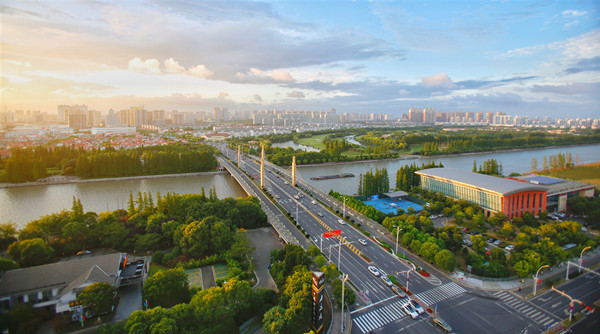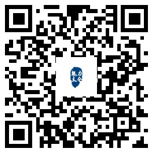Wu Xiaobang
Wu Xiaobang, a dance artist, theoretician and trainer, was born on December 18, 1906 in Taicang county, Jiangsu province. As a young man, he was influenced by the May 4 New Culture Movement and participated in progressive campaigns.
From 1929 to 1936, Wu visited Japan three times to learn from Takata Masao and Eguchi Takaya. He studied and felt inspired with the modern dance theories formulated by I. Duncan and M. Wigman.

He founded the Xiaobang Dance School in Shanghai in 1932 and the Xiaobang Dance Research Institute in 1935 to popularize new dances. In September 1935, he held a press conference in Shanghai to unveil groundbreaking dance routines.
The performances include Puppet, which simulated a fawning running dog image, while satirizing a Manchu Dynasty emperor who betrayed his country. The Burial Ceremony was similar to the music of F.F. Chopin to symbolize the decay of the old system in the nation.
The Night of Pujiang River displayed Chinese youths who struggled under the misery of the semi-feudal and semi-colonial period. The works were based on real life experiences, which experimented with new themes, genres and modes of expression. He intended to explore the true meaning of life through dance. After the outbreak of the Sino-Japanese War, the Chinese were confronted with a critical moment. Wu left Shanghai and threw himself into the ranks of the anti-Japanese movement.
His works had changed in content and form. The dances, ‘March of Volunteers’ and ‘Song Guerrillas’ appeared on stage that had shown blazing emotions. He applied dance images to inspire the Chinese to fight against Japanese invaders.
From 1938 to 1945, Wu launched a new dance movement in Guangdong, Shanghai, Guilin and Chongqing. He set up a dance department in the Guangdong Provincial Arts College in Qujiang region in 1943.
It was the first institution to teach professional dancing in the country. Wu sowed the seeds of dance. Blow His own Trumpet Shamelessly, a representative work of the stage that was comprised of four sections, Flatter, Find Favor, Bloat, and Decline.
The dances adopted playful music and masks to expose the misdeeds of traitors. Think of Worldly Pleasures displayed the bitter struggles of a young monk between his reason and desires.
The dance was natural and smooth, emphasizing descriptions of the inner world of characters, rich in philosophy. Hunger Fire, with the aid of passionate color changes and action lines coinciding with the theme, “while the rich wine and dine, the poor die of cold by the roadside.”
In 1938, Wu created the dance dramas, ‘Poppy Flower, Lord Tiger’ and ‘Pagoda Memorial Archway.’ The first two reflected Wu’s aspirations that the Kuomingtang and Communist parties should unite to fight Japanese invaders.
The Pagoda Memorial Archway adopted dance art images to expose the feudal system that destroyed the love of young men and women, as well as the hypocrisy of feudal moral codes of loyalty, filial piety, chastity and righteousness.
Wu advocated that dance should express social life. His works adopted satire, hints and symbolism to disclose the dark side of ancient society with a profound impact.
In June 1945, Wu arrived at the Yan’an, the revolutionary land. He lectured on dance in the Yan’an Luxun Literary Institute. He moved around the liberated areas to promote the new dance movement.
In 1948, Wu created the March Forward Dance with colleagues of the propaganda team at the general political department of Northeast Democratic Allied Army. The dance featured the heroic spirit of the People’s Liberation Army. It reached new heights with contemporary soldier dances.
In 1951, Wu presided over the training class for dance movement cadres in the Central Academy of Drama, which cultivated dance culture for the New China. He assumed the chairmanship of the China Dance Research Institute in 1954, so he could guide the research of Chinese dance history along with Confucian and Taoist dances.
Wu set up the Tianma Dance Art Studio in 1957, which was a continuation of his theoretical system. He learned the melodies and rhythms of ancient music and explored psychological rules and modes of expression to deliver passion through music and dance movements.
He created the dance works such as, Three Stanzas of Plum-blossoms, Wild Geese over Clam Sands, Fisherman Music, Ambush on All Sides, and Plum Blossom Exercise.
In 1979, Wu was elected as chairman of the Chinese Dancers Association. He promoted the prosperity of national dance theoretical studies.
He sponsored dance seminars in Beijing, Jiangxi, Sichuan, Liaoning, Zhejiang, Fujian, Inner Mongolia and Hong Kong. He held special lectures on basic theories, application theories, and history of dance. He organized students to create and exercise dances.
From 1982 to 1983, he taught dance theory courses at the education department of the Beijing Dance Academy and the Arts Department of Minzu University.
He set up a teaching system to integrate theories and practices on the natural rules of early stage modern dances and Chinese folk dances. He adopted the teaching method of reading, thinking and practicing to inspire the imagination of dancers.
As an influential dance educator, he trained many talented dancers. His main works included Introduction to New Dance Art, My Dance Art Career, New Theory on Dance, Dance Theory, and Random Thoughts, which established the foundation for national dance art theories.
Wu had worked as a member of the standing committee of the China Federation of Literary and Art Circles, leader of the Central Nationalities Song and Dance Troupe, chairman of the China Dance Research Institute, chairman of the China Dancers Association, and director of the Dance Research Institute under the Chinese National Academy of Arts.









